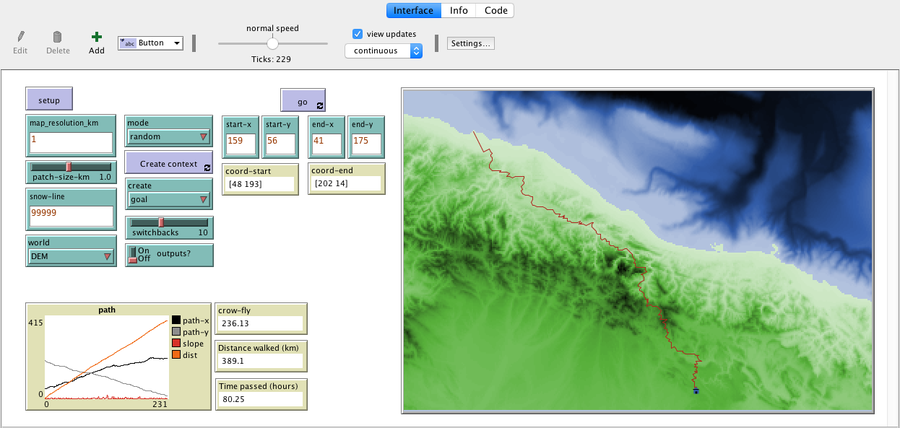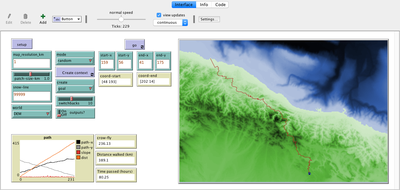Least cost path mobility 1.1.0
This model tries to mimic human behavior in a topographical environment. It aims to go beyond the GIS approach to least-cost path that requires perfect knowledge of the whole environment to choose the best path between two points. This model is different in that the agent does not have a perfect knowledge of the whole surface, but rather evaluates the best path locally, at each step, thus mimicking imperfect human behavior more accurately. It relies on the work by Naismith (1892, in Aitken 1977) and Langmuir (1984) on walking time expenditure in rugged environments. Their walking time values are used to calculate the agent’s travel time.
v. 1.3.0 introduces the Lorentz mobility algorithm, created by Campbell et al. (2019) using fitness trackers. It also allows for multiple hikers and goals.

Release Notes
This model aims to mimic human movement on a realistic topographical surface. This new version allows users to explore three different ways in which an agent can choose an easy route to reach a certain goal, and explore multiple different scenarios. In this model, the agent does not have a perfect knowledge of the whole surface, but rather evaluates the best path locally, at each step, thus mimicking imperfect human behavior more accurately. Moreover, it allows exploring seven setup scenarios and three different optimization processes, with the simple change of parameter values.
